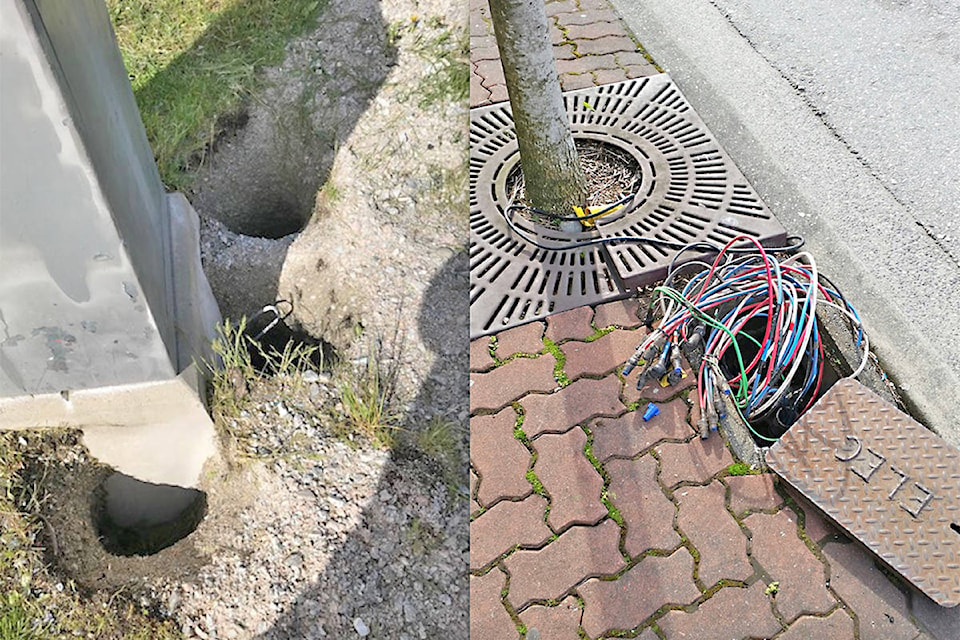Thieves are going underground to steal wire in the 91ԭ��s, digging up conduits to get at cables.
Kyle Simpson, manager of engineering operations in 91ԭ�� City, said the municipality has noticed several instances where thieves have dug holes to get at underground lines in areas where there are no overhead wires to steal.
It appears to be a new tactic, said Simpson, who does not recall dealing with dug-up power lines until this year.
“It’s very frustrating and expensive,” Simpson said.
In some cases, wires have not been removed, simply cut.
“We’re not sure if the people were unsuccessful [in those cases] or if it is more of a vandalism issue,” Simpson said.
For all of 2018, the municipality had budgeted $12,000 for wire-theft repairs.
As of November, costs were at $98,000, the cost of the wires and the labour to replace them.
“It’s been a bad year for wire theft,” Simpson said.
91ԭ�� City has already taken steps to make wires harder to steal, and more measures are planned, such as adding tamper-proof bolts to wire access holes and locking lids on junction boxes.
That is expected to cost $15,000, and there is no guarantee it will completely stop the thefts.
“Unfortunately, nothing is fully tamper-proof,” Simpson said.
READ MORE:
91ԭ�� Township has also experienced an upswing in wire theft incidents with 14 individual incidents of vandalism and wire theft within the last three months reported to the RMCP.
“It appears to be more rampant with thieves targeting residential areas,” said Brian Edey, Township roads operations manager.
Ebey said the Township has also seen underground lines dug up beside street lights.
“This has been going on for months,” Edey said.
“The new road that was opened recently — University Drive — has had a number of locations where [the ground] was dug out to get at wires.”
He said the method is being used to get around anti-wire-theft devices on the street lights.
The Township typically spends about $30,000 per year for vandalism and repairs including wire theft, but spent about $20,000 on wire theft between January to September and over $30,000 just in October and November .
“With the increase in incidents it will take longer to make repairs,” Edey said.
91ԭ�� Township plans to install more anti-wire-theft devices including heavy-duty “hand hole” covers to make it harder to get at wires.
Edey said the average cost of repair per incident averages $2,000 to $2,500.
An anti-metal theft law was passed in 2012 that requires licensed metal dealers and recyclers to keep records of the type of metal they buy and to record the identities of the people they buy it from.
Buyers must also report their purchases to police.
As well, sellers of certain types of metal have to show a driver’s licence or B.C. Identification Card.
In the first year after the law took effect, the number of wire thefts reported by BC Hydro dropped 46 per cent.
This year, copper commodity prices increased on world markets by 20 per cent over last year, said to be due to increased demand created by the rising popularity of electric vehicles.
If residents see people stealing wires they should call police at 911.



